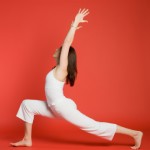 By Kimaya Singh
By Kimaya Singh
What is the history and origin of Ashtanga Yoga as we know it today? Ashtanga or the eight limbs of Yoga has steadily become as popular as Hatha and Kundalini forms of Yoga around the world. Since its global proliferation in the 20th century, many people today tend to think of Ashtanga as being a recent invention. In fact, the roots of this particular style reach back over two thousand years and possibly before that.
Before Written Records
Although sources disagree on the exact date of Ashtanga’s birth, most experts consider it to originate from 400 years BCE to 250 years before the date of Christ’s birth. The variation in dates is probably due to the fact that this form of Yoga training probably passed from teacher to student before the standardized poses we see today were written down or codified. When philosophies existed for hundreds or thousands of years, they grew by word of mouth before they were recorded.
Variation of Raja
Many sources give credit to the sage Patanjali as the creator of modern Ashtanga vinyasa, which is a physical variation of Raja. He is credited with coming up with the philosophy that regular practice should consist of eight “limbs” or practices that will enable a person to reconnect with their heart and their true being.
Eight Limbs
The eight limbs or components of Ashtanga and Raja are the physical body, devotion, observation and meditation on current states, withdrawal from the world into the other limbs, concentration on the breath, ethics, and a drive towards a union with the divine.
Early Days
Other sources state that forms of this style go much further back in history and that some forms were practiced approximately 5000 years ago. While that is often confusing to students, it’s likely that early students of Ashtanga practiced localized forms of the movements, as it grew and changed from one teacher to the next.
Sequences
Additionally, it’s most likely that there was not a drive to standardize the flow of movements until Pantajali’s lifetime. By the 1940s, under the guidance of master Yoga instructor Sri K. Pattabhi Jois, a codified and standardized form of asana sequencing came to the West. Sri K. Pattabhi Jois is said to have learned this system from his teacher, T. Krishnamacharya, and the Yoga Korunta.
Standardization
Thanks to the work of Sri K. Pattabhi Jois, students across the globe are able to practice the same sequence of movements, no matter where they study and under what teacher they train. He standardized Yoga teacher training requirements within his style. This consistency is perfect for instructors and students who enjoy a bit of structure in their practice.
Holistic Practice
Since Ashtanga has been concerned with unifying the physical with the emotional and spiritual aspects of life, this style has attracted students who enjoy practicing Yoga for its spiritual aspects as well as the physical ones. Students are usually pleased to find that Ashtanga moves a focus from just moving to a holistic practice that involves every aspect of a practitioner’s life.
Re-Discovery
About the Origin of Ashtanga Yoga: Modern Ashtanga Vinyasa is a practice that was re-discovered by Krishnamacharya (1888-1989) in the early 1930s. Its origins, however, predate this re-discovery by centuries.
The Lost Yoga Korunta
There are many conflicting stories regarding the Yoga Korunta, which was said to have been written by Vamana Rishi. However, a copy does not currently exist. Of course, today’s skeptics will cry foul. Some believe it existed, while others claim it was a myth. Therefore, I will lean toward the existence of the Yoga Korunta based upon T. Krishnamacharya’s involvement.
Core Text
Sometimes, when there is no proof, the truth or a popular myth tend to cancel each other out. Furthermore, it may also be possible for ants to eat the last copy of the Yoga Korunta. Regardless, a tangible copy of the Yoga Korunta would have been a valuable work of art. Of course, this makes reading about the history and origin of Ashtanga Yoga all the more interesting.
© Copyright – Aura Wellness Center – Publications Division
Do you want to become a mindfulness meditation teacher?
To see our selection of Yoga instructor courses and continuing education courses, please visit the following link.
https://aurawellnesscenter.com/store/
Click here to see our online Yoga Nidra teacher training course.
Are you an experienced teacher looking for YACEP credits or continuing education?
Subscribe to Our Newsletter for Special Discounts and New Products
Related Resources
52 Essential Principles of Yoga Philosophy to Deepen your Practice
by Rina Jakubowicz
A Relaxing Way to De-stress, Re-energize, and Find Balance
by: Gail Boorstein Grossman
YOGA: THE PATH TO HOLISTIC HEALTH
by B.K.S. Iyengar
TEACHING YOGA: Essential Foundations and Techniques
By Mark Stephens
Russell, James.”Yoga Korunta – Unearthing an Ashtanga Legend”, Devon, 11/11/15. Retrieved on 20 September 2017.
Singleton, Mark (February 10, 2010). Yoga Body: the origins of modern posture practice. Oxford University Press. ISBN 978-0195395341.
